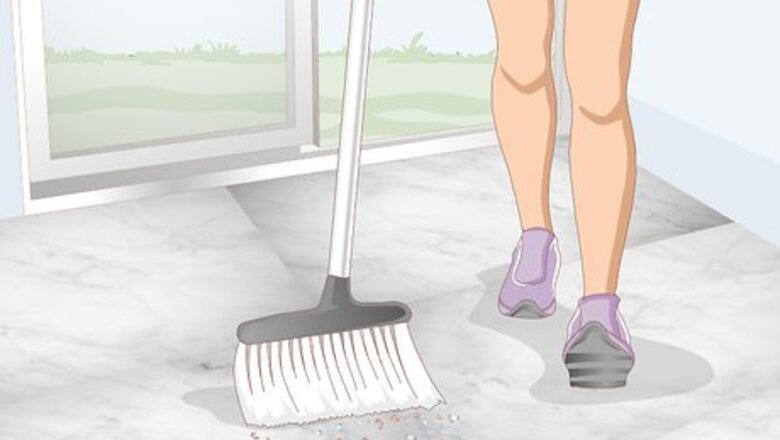
views
Cleaning the Floor and Treating Stains
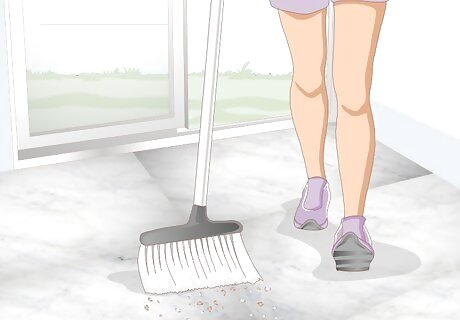
Sweep the floor to clean up any loose dirt and debris. Use a soft broom to sweep up all the loose dirt and debris from the marble floor into a pile. Sweep the pile into a dust pan and pour it out into a garbage can. Pay special attention to any corners or spaces underneath furniture where dust and dirt can accumulate. Lift up any rugs or mats and remove them temporarily so you can access the floor underneath them.
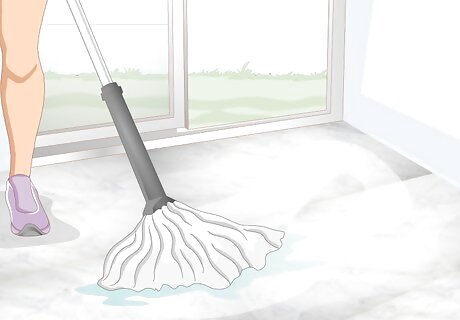
Mop the floor to remove stuck-on grime. Pass a damp mop over the entire marble floor using figure-eight motions to clean up any dirt that you weren’t able to sweep up. Rinse the mop in a bucket of clean water and wring it out when it becomes dirty or dries up as you work.Tip: Sweep and mop your marble floors regularly to keep them from accumulating dirt and grime that can damage the shine. If the floor is particularly dirty and the mop water becomes dirty when you rinse out the mop, pour out the bucket and refill it with fresh water to avoid reapplying dirt to the floor as you mop.
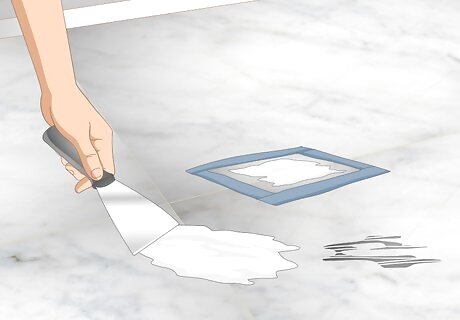
Apply a homemade poultice to stains to treat them before polishing. Mix 1 part hydrogen peroxide with 4 parts water and enough baking soda to make it into a thick paste. Cover any stains completely with the paste, then cover the paste with plastic wrap and tape the edges down. Let it sit for 24-48 hours until it is completely dry, then remove it and wipe the area clean with a damp cloth and dry it off with a clean towel. The poultice paste will suck out stains from the porous marble. If the stain is still visible after the treatment, repeat the process with another application of poultice.
Polishing with a Soap and Water Solution
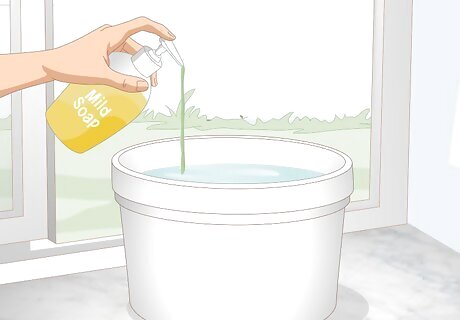
Mix a tiny bit of mild liquid dish detergent into a bucket of water. Use an environmentally-friendly liquid dish detergent and a bucket of clean water. Squeeze 3-4 drops of the detergent into the bucket and agitate it until it starts to foam up.Warning: Never use any kind of acidic detergent or chemical cleaners on a marble floor or you will end up damaging it. A solution of mild soap and water is all you need to polish marble floors by hand. Marble is very porous and delicate, so harsh chemical cleaners can damage it and dull its finish.
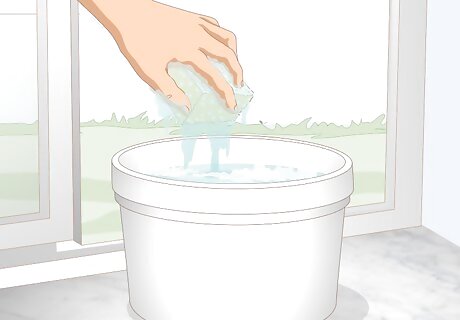
Soak a sponge in the bucket of soapy water and wring out the excess water. Dip a clean sponge into the bucket to saturate it completely. Lift it out and wring it out over the bucket until it is just damp and not dripping with soapy water. A regular yellow sponge is all you need to apply the solution to the marble floor. You just need to use the soft spongy part, so it doesn’t matter whether it has a green abrasive side or not.
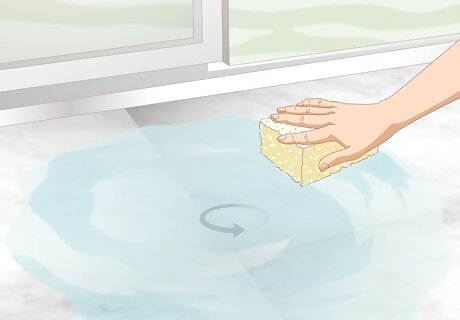
Sponge the floor using small circular motions. Work in small sections and apply light pressure as you move the sponge in small circular or arcing motions. Rewet the sponge as needed while you work until you have sponged the whole floor with the soap solution. If there are any stubborn stains that you can’t get out with the sponge, you can use a soft-bristled brush to scrub them more vigorously.
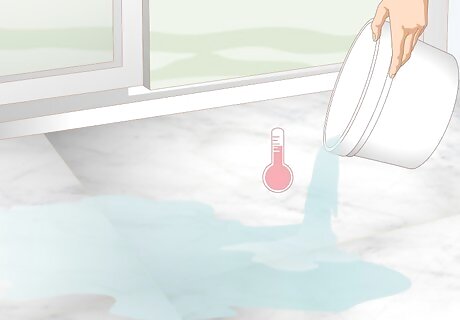
Rinse the floor with clean, warm water from another bucket. Fill a bucket with clean warm water. Work in small sections and carefully pour out just enough to rinse away any soap residue. Don’t ever let puddles of water sit on marble floors for extended periods of time.
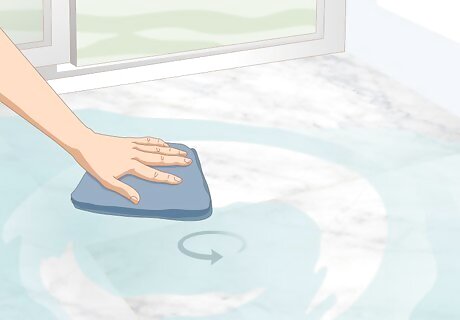
Wipe the floor dry with soft dry towels using circular motions. Use a soft, clean towel, such as a microfiber cloth or chamois. Wipe up the water from the rinsed areas using circular motions. This will clean up any remaining soap residue and polish the marble surface.
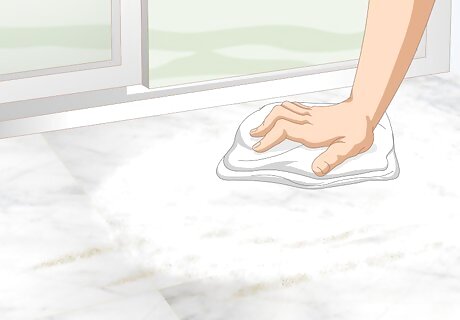
Buff out any scratches with a marble polishing powder. Sprinkle a small amount of marble polishing powder on top of any spots with scratches or scuffs. Rub the powder into the scratches with a clean damp cloth using circular motions. Wipe the marble clean with another clean damp cloth, then dry it with a fresh cloth. Make sure you use a polishing powder that specifically states it is OK to use on marble. Always refer to the product's instructions for any additional suggestions to achieve the best results.
Protecting a Marble Floor to Keep it Shiny
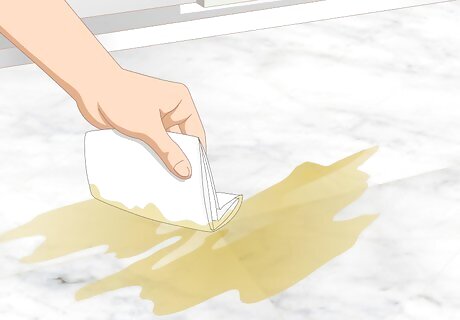
Wipe up spills immediately to prevent damage and permanent staining. Many types of liquids can leave permanent stains on marble floors. Act quickly whenever you spill something on the floor to wipe it up with a nonabrasive sponge or soft cloth. Even plain water can dull the surface of the floor if you leave it sitting. Acidic liquids like vinegar, citrus, or wine will especially damage marble if you don’t wipe them up right away. Avoid using all-purpose cleaners and homemade acidic cleaning solutions, such as those that contain lemon juice or vinegar. These types of cleaners will damage the finish of the marble and leave it looking dull. It’s OK to use a commercial cleaner that is specifically made for cleaning marble surfaces.
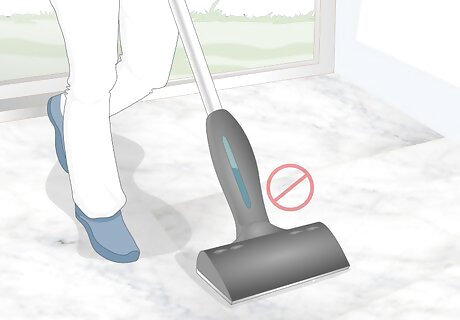
Avoid vacuuming a marble floor to keep from scratching it. A vacuum cleaner has lots of hard parts on the bottom that can scratch the soft surface of marble. Use only a soft broom and mop to perform regular cleaning. A soft dust broom and a sponge mop are ideal for safely cleaning your marble floors without scratching them.
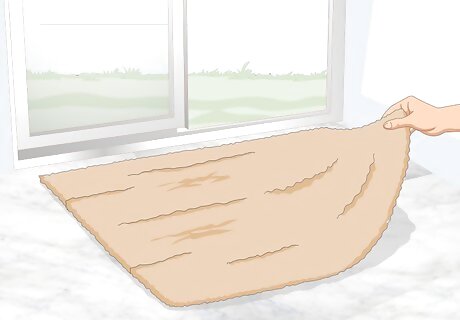
Place mats or rugs in high-traffic areas to protect the floor. Put down welcome mats by doors to the outside that people come in and out of to keep some of the outdoor dirt and grime from getting tracked over the floors. Place rugs in areas where people constantly pass by, such as hallways or living areas, to help protect the surfaces from scratches.Tip: It’s also a good idea to have people take off their shoes at the front door before walking around on top of the marble floors to avoid scratching them with dirt and debris stuck to the bottom of their shoes. It’s very easy to damage the polished shine of a marble floor with abrasive dirt, so the more you protect it, the longer it will last and the less polishing it will require.
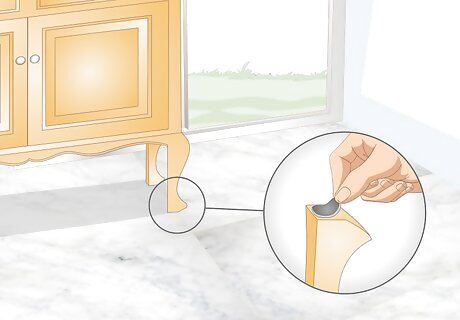
Put felt pads on the bottom of any furniture that is on top of the marble floor. Apply stick-on felt pads to the bottoms of the legs of any furniture like chairs or tables. This will protect the floor from scratches when you slide the furniture around. You can get stick-on felt pads at a home improvement store or online. Buy a big pad that you can cut to different sizes if you have a lot of different furniture you want to apply it to.
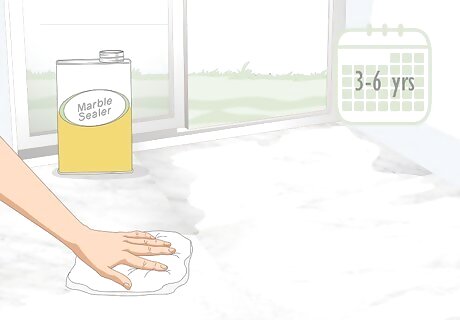
Reseal the floor every 3-6 years to protect its shine. Apply a new coat of marble sealer to the entire surface of the floor with a clean, soft rag. This will penetrate the pores of the marble to seal them and protect the floor from spills and stains. You can check if it is time to reseal the floor by pouring a spoonful of water onto an inconspicuous spot of the surface. If the water gets absorbed and darkens the stone in 1 minute or less, there is no sealer left on the marble and you need to apply a new coat.



















Comments
0 comment